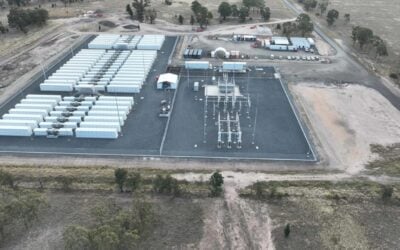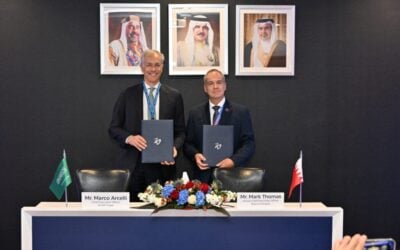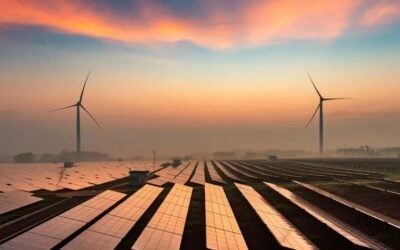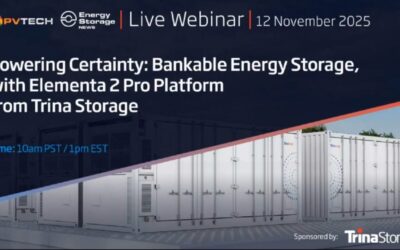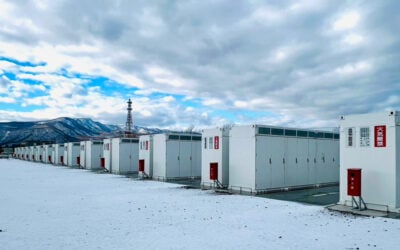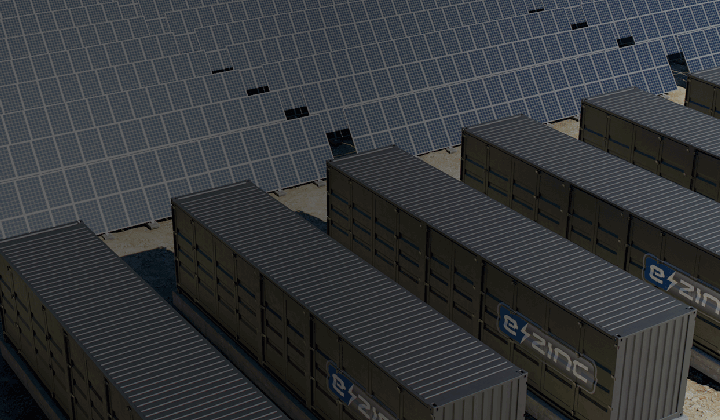
Zinc-air battery company e-Zinc has entered into a pilot project collaboration with Toyota Tsusho Canada (TTCI) to trial its energy storage system at a wind farm in Texas.
The paid demonstration project will test and validate how e-Zinc’s commercial scale solution can provide 24 hours of long-duration energy storage, which e-Zinc said is 10x that of traditional batteries. TTCI will support installation, integration, and system operation & maintenance (O&M) on the project.
The project should launch in spring 2023 and will take place at wind power company Eurus Energy America Corporation’s (EEAC) Bull Creek wind facility in Borden County, Texas. Excess wind capacity will be stored in e-Zinc’s battery system and then be used to power buildings at the local facility, the press release said, adding the longer duration suited the intermittency of wind generation.
EEAC’s parent company Eurus Energy is a 60:40 joint venture between Toyota Tsusho Corporation and Japanese utility Tokyo Electric Power Company. Today EEAC has 567MW of wind and solar power generation assets in the Americas.
Try Premium for just $1
- Full premium access for the first month at only $1
- Converts to an annual rate after 30 days unless cancelled
- Cancel anytime during the trial period
Premium Benefits
- Expert industry analysis and interviews
- Digital access to PV Tech Power journal
- Exclusive event discounts
Or get the full Premium subscription right away
Or continue reading this article for free
It comes two months after e-Zinc raised US$25 million to embark on such pilot projects, in a Series A that include Toyota Ventures, the Japanese conglomerate’s venture capital arm. At the time, renewable energy projects by another participating investor, Eni Next, were touted as good locations to trial e-Zinc’s solution.
E-Zinc said the project will potentially lead to future manufacturing, supply chain and commercial opportunities between TTCI and e-Zinc. The project is one of several upcoming e-Zinc field demonstration projects including a US$1.3 million project with the California Energy Commission, where its storage will be paired with a solar PV farm and provide 24-48 hours duration.
The company’s battery technology uses zinc metal as the energy carrier. The metal is detached from the electrodes, allowing it to be stored independently at low-cost, while the storage space is located within the same electrochemical cell as the electrodes, enabling a simple operation, according to e-Zinc’s website.
The technology’s ability to discharge for several days could even take it past the capabilities of other non-lithium alternatives like flow batteries and thermal energy storage solutions.
“The most important aspect of this relationship is that TTCI’s interest extends far beyond this initial project – TTCI has identified e-Zinc as a high potential company with strategic alignment to its business,” said James Larsen, CEO at e-Zinc.
“This project sets the stage for TTCI to support e-Zinc with manufacturing and supply chain capabilities, sales, and distribution support, as well as project deployment and service for a variety of market applications (e.g., remote mines, off-grid car dealerships, hospitals on weak grid, etc.).”
Zinc batteries, which use a metal that dates back to the very start of the history of batteries as explained in a recent Energy-Storage.news guest blog, have been making headlines of late. The new generation of solutions has overcome challenges for zinc like zincate solubility, shape change, gassing, dry-out, capacity loss and dendrite formation using various innovative engineering solutions.
A few weeks ago, zinc battery company Urban Electric Power signed a memorandum of understanding (MOU) with renewable energy developer Pine Gate Renewables to supply the latter up to 4,550MWh of its batteries over five years, reported by Energy-Storage.news.
That followed hot on the heels of sustainable homebuilder Horton World Solutions (HWS) choosing Salient Energy’s zinc-based battery solution for its pipeline of 200,000 homes. HWS was founded by the brother of the founder of the US’ largest homebuilder D R Horton.
Perhaps the leading player in the space going off money raised and revenues, Eos Energy last month bagged US$200 million investment through a share sale to scale up its production.

